The Republic of Malta is an island nation comprised of an archipelago where only the three largest islands are inhabited: Malta (Maltese: Malta), Gozo (Għawdex), and Comino (Kemmuna) – and Comino is just barely inhabited.
Despite its fairly small size, there are many things to explore and experience during a stay in Malta, ranging from historical sites and cultural events to beach life and adventures in nature. You can learn more about Mediterranean prehistory and history, dive into crystal-clear waters, enjoy the vibrant Maltese nightlife, and explore picturesque landscapes. Whether you’re fascinated by Malta’s megalithic temples, want to relax on gorgeous beaches, or prefer discovering Malta´s rich culture, this destination provides an unforgettable Mediterranean experience. Its blend of history, natural beauty, and modern attractions ensures there’s always something exciting to do.
Valletta – A UNESCO World Heritage City
Valletta, Malta’s capital city, is packed with historical significance and beautiful architecture. Known for its narrow streets, vibrant culture, and impressive baroque buildings, Valletta is a must-visit for history lovers.
- While St. John’s Co-Cathedral is a fairly unassuming structure from the outside, the interior is breathtaking, filled with gold leaf, marble floors, and paintings, including works by Caravaggio, such as “The Beheading of Saint John the Baptist.”
- The Grandmaster’s Palace is the former residence of the Knights of St. John. It now serves as the office of the President of Malta. It houses an armory displaying suits of armor and weapons from the era of the Knights. Parts of the palace are said to be haunted by cat and dog ghosts.
- The National War Museum at Fort St. Elmo is a great destination if you want to learn more about Malta’s military history, particularly its role during World War II.
- Walking is a great way to explore and experience Valletta, including the beautiful stairs found throughout the city. The entire peninsula is just a few kilometers in length. You can hire an audio guide from the Archaeology Museum in Republic Street to learn more about the places you stroll by; audio guides are available in many different languages, including English.
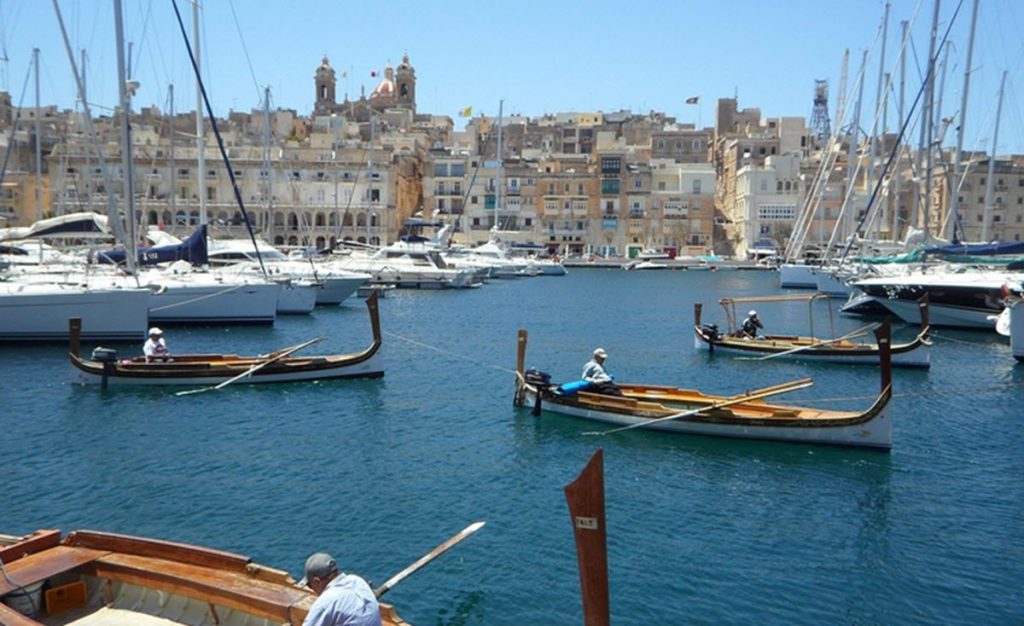
The Fortified City of Mdina
Mdina (L-Imdina) is an ancient fortified city in the northern part of the island of Malta. Once the capital of Malta, its streets have a mystical quality, especially at night when the city is lit up by lanterns.
- St. Paul’s Cathedral in Mdina is a magnificent baroque cathedral dedicated to Saint Paul.
- The city’s iconic entrance, the Mdina Gate, can be seen in the HBO tv-series Game of Thrones.
- St. Paul´s Catacombs were created from the third to the eight centuries CE. They form a part of a large cementery that were once established outside the walls of the ancient Roman city Melite (now Mdina and Rabat).
Megalithic Temples, Ancient Wonders, And More
Malta boasts some of the oldest extant free-standing structures in the world, known as the megalithic temples. These prehistoric sites are older than the Pyramids of Giza and Stonehenge.
- Located on Gozo, the Ġgantija Temples date back to around 3600 BCE and are believed to have been constructed for religious purposes. Their name, meaning “giant’s towers,” comes from local folklore that giants built them. (To put it into perspective, the Pyramids of Giza were built between c. 2600 and c. 2500 BC.)
- The temples Ħaġar Qim and Mnajdra are considered masterpieces of ancient architecture, with Ħaġar Qim featuring massive stones, some weighing over 20 tons. Positioned overlooking the Mediterranean, these temples offer both an incredible archaeological experience and scenic views of the coastline.
- The Hypogeum of Ħal-Saflieni in Paola is an underground necropolis that dates back to around 4000 BCE and is one of Malta’s most mysterious and fascinating ancient sites. This UNESCO World Heritage Site is a multi-level labyrinth of chambers carved from rock and used as both a sanctuary and burial ground. Due to its fragility, the number of daily visitors is limited, so booking tickets in advance is recommended.
Hypogeum of Ħal-Saflieni has been dated to the Safliene phase, 3300 – 3000 BC, although the site may have been used as early as 4000 BC. It is believed to have been both a sanctuary and a necropolis, and the remains of roughly 7,000 individuals have been documented by archaeologists. The hypogeum was created by the same culture that built the Megalithic Temples on Malta.
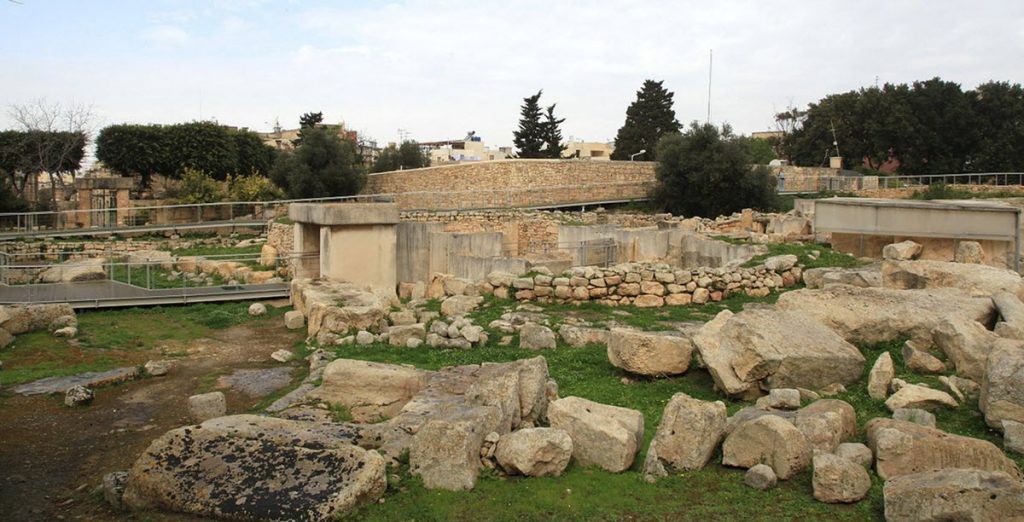
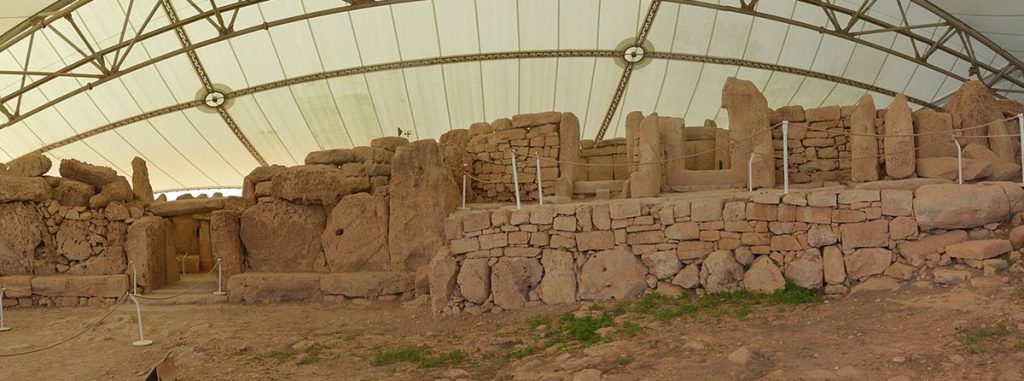
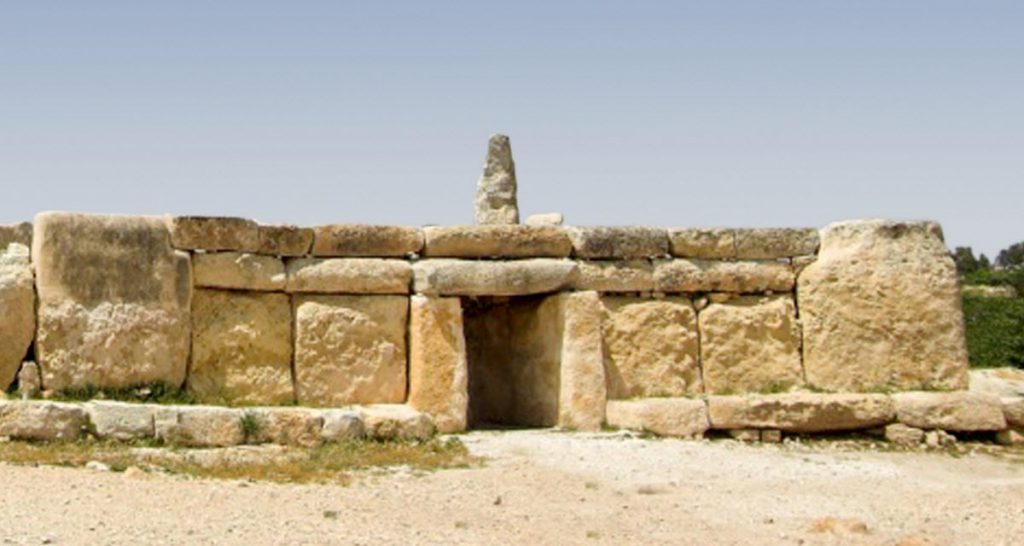
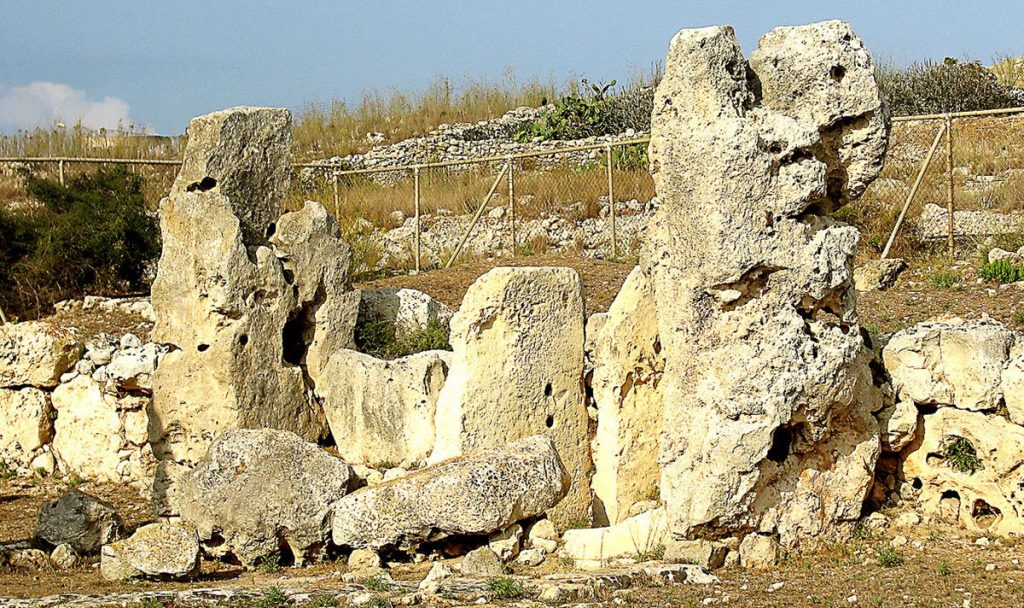
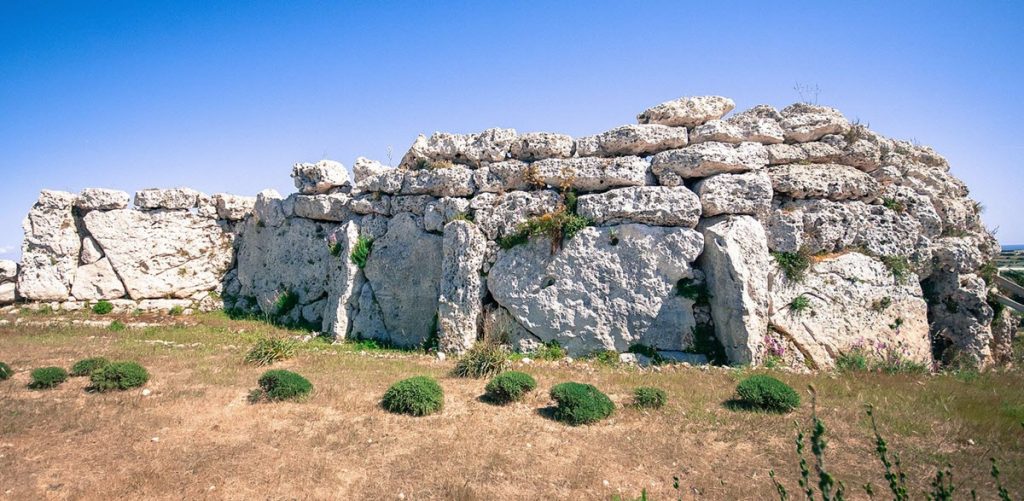

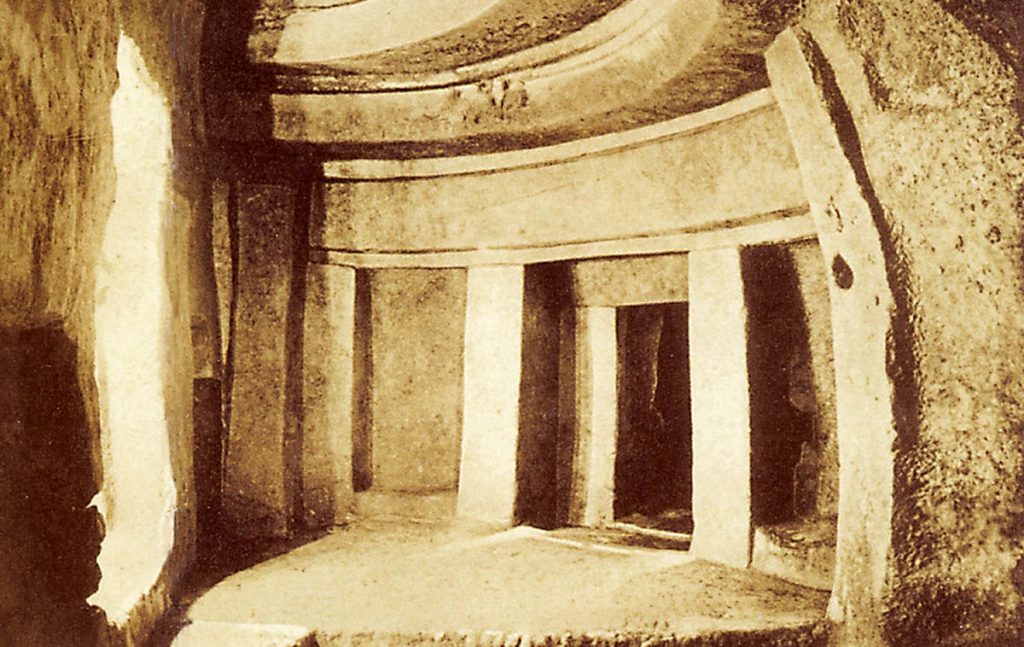
The underground structure may have originated from a natural cave that the people of Malta then expanded over time by removing parts of the soft globigerina limestone. The structure now consists of three different levels, and the halls and chambers are connected through a labyrinthine series of steps, lintels, and doorways. Archeologists believe that the upper level is the oldest one, and that the middle and bottom level was created later. Burial chambers in the upper level have been dated from the early phase of the Maltese Temple Period.
Based on pottery found here and analysis of human remains, archeologists estimate that the hypogeum was used until circa 2500 CB.
Traditional Maltese Festas
If you visit Malta in summer, you can experience a Maltese festa—a traditional village feast in honor of the local patron saint. These festas are a vibrant blend of processions, fireworks, music, and food. Towns are beautifully decorated, and it’s an excellent opportunity to see the local culture and community spirit. A Maltese festa will typically run from Monday through Sunday, with Saturday and Sunday being the most active days. Fireworks are common, both in the air and on the ground.
Examples of Maltese festas:
- Saint Philip in Zebbug, on the second Sunday of June
- Our Lady of the Lily in Mqabba, on the third Sunday in June
- Mount Carmel in Zurrieq, on the last Sunday in July
- Saint Mary of Imqabba in Qrendi, on the 15th of August
- Saint Catherine in Zurrieq, on the first Sunday of September
- The Nativity of Our Lady in Mellieha and Naxxar, on the 8th of September
Gozo Island
Gozo is the second-largest of the islands in the archipelago. It is quieter and greener than the main island, offering a more relaxed atmosphere. Known for its stunning landscapes, Gozo is a destination in its own right. There is no international airport on the island so most tourists arrive by boat from the island of Malta.
- Ramla Bay is Gozo’s largest sandy beach, known for its unusual red-gold sand. The beach is usually not crowded, making it ideal for a quiet day by the sea.
- Iċ-Ċittadella is a fortified city perched on a hill in the town Victoria (Rada), offering panoramic views of the entire island. It’s a perfect spot to wander through museums, small shops, and historic buildings.
- Ta’ Pinu Basilica is a significant Roman Catholic site on Gozo and believers see it as place of miracles. It is a striking church surrounded by open countryside, perfect for peaceful reflection.
Scuba Diving in Malta
Malta is a top destination for diving, thanks to its clear waters, underwater caves, and shipwrecks. The island offers dives for both beginners and experienced divers.
The internationally famous Blue Hole is a naturally formed rock formation that leads to an underwater cavern, and it is a very interesting diving spot.
If you are into wreck diving, there are several shipwrecks to explore around Malta, including some from World War II. Two examples of well-visited wrecks are Um El Faroud and HMS Maori.
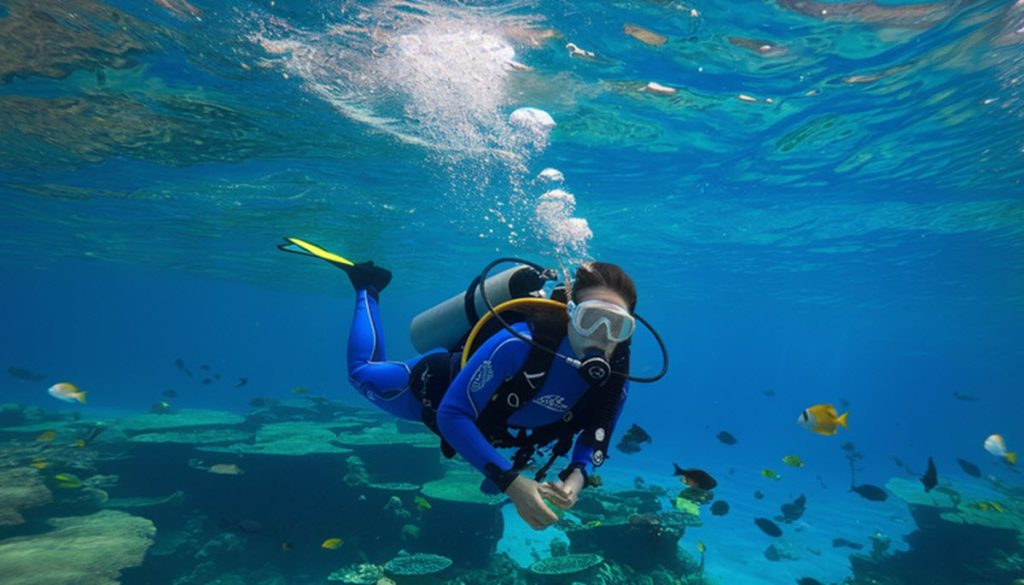
Malta’s Beautiful Beaches and Swimming Holes
Unsurprisingly, this Mediterranean archipelago is blessed with some wonderful beaches, and you can find both lively beaches with plenty of activities and more relaxed, secluded spots.
- One of the largest sandy beaches in Malta is Golden Bay, on the northwestern side of the island of Malta. It is popular for beach life, swimming and water sports.
- If you are travelling with young kids and looking for a family-friendly beach with shallow waters and plenty of facilities, our recommendation is Mellieħa Bay (Għadira Bay).
- For a more adventurous experience, make a trip to St. Peter’s Pool. This is a natural swimming hole formed in the limestone cliffs of Delimara Point, and it is a popular spot for cliff diving and snorkeling.
- The Blue Lagoon on the island of Comino is famed for its crystal-clear turquoise waters and is perfect for swimming, snorkeling, and relaxing. Its shallow waters make it family-friendly. The Blue Lagoon is easily accessible by a short boat ride from Malta or Gozo. Tour operators offer daily excursions, some of which include stops at nearby caves and other scenic points.
These are just a few examples of the many spots that are well worth a visit in this beautiful archipelago.
Boat Tours Around the Maltese Coast
One way to experience Malta’s natural beauty is by taking a boat tour. These tours can range from relaxing harbor cruises to full-day excursions around the islands. There are for instance harbor cruises that leave from Valletta, where you get to enjoy breathtaking views of Valletta’s fortifications and the Three Cities by boat. Another option are the Cave Tours, where you visit various sea caves, such as the famous Blue Grotto.
Nightlife & Gambling in Malta
If you’re looking for nightlife, St. Julian’s – including Paceville – is the go-to spot for entertainment. With an array of bars, nightclubs, and restaurants, this area is vibrant and lively, especially during the summer months. Many beach clubs and bars along the coast offer stunning sea views, with music and entertainment lasting into the early hours of the morning. There are also several casinos in this area for those interested in a night of gambling.
The town Saint Julian is located at the eastern coast of the island of Malta, north of Valletta. Within Saint Julian, Paceville is the district with the most hotels, restaurants, bars, pubs, and nightclubs. A lot of the people who live in Paceville are foreigners.
Shopping in Sliema
The town Sliema is where you will find one of the main shopping districts in Malta, and there are also plenty of restaurants and bars here. It is not really a place to find bargains – a lot of the stores are either staples like Zara, Top Shop and Mango, or high-priced designer boutiques. If high-end is your thing, Tigne Point in Sliema is a good choice.
A lot of the people working in the shops in Sliema speak English, and there are also a lot of foreigners living in this town who speaks English as a first or second language.
Sliema connects to St. Julian, with St. Julian being located on a peninsula to the north.
There are not a lot of parking spots in Sliema, so catching the bus to get here is a good idea. From Valletta, buses for Sliema leaves from the terminus. Another wonderful choice is to catch the ferry from Valletta to Sliema; you embark at Boat Street in Valletta and get off on Tigné Seafront in Sliema.
